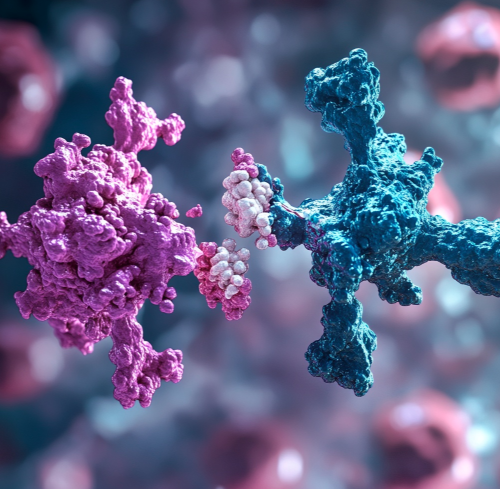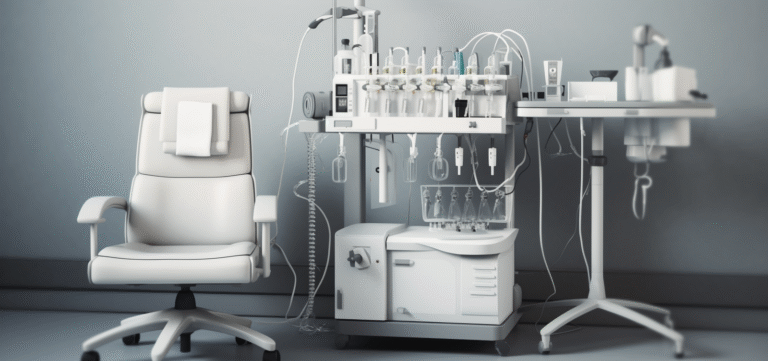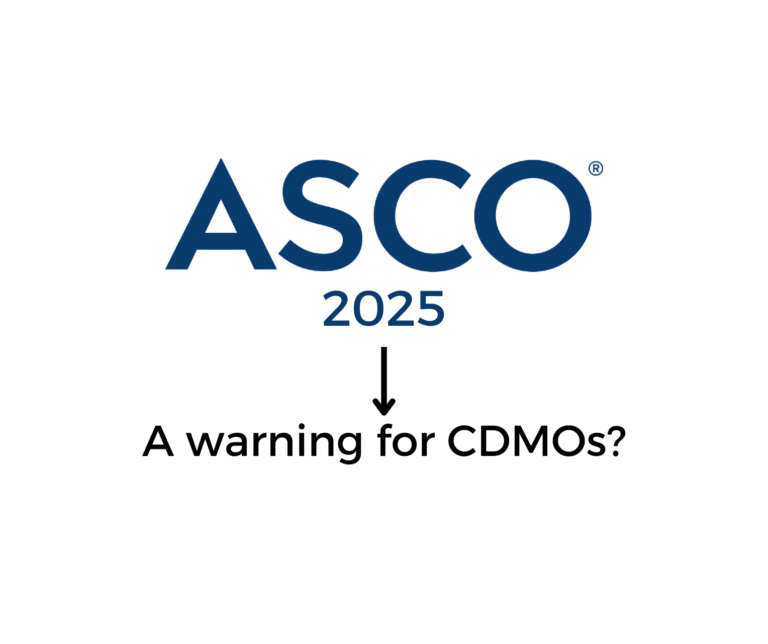
The concept of an antibody engaging two targets simultaneously is not new; it has been a subject of scientific inquiry for decades. What is new, and what represents a structural transformation in the biopharmaceutical industry, is the industrial-scale convergence of clinical validation, manufacturing capability, and strategic capital that has elevated bispecific antibodies (BsAbs) from a niche modality into a central pillar of therapeutic innovation.
We are witnessing the modality’s industrialization. For C-level decision-makers and institutional investors, this is not a moment of invention, but one of critical inflection. Understanding the forces driving this maturation is essential for navigating the next decade of drug development. This analysis deconstructs the key clinical, commercial, and technological vectors propelling the BsAb market, identifying the key players and outlining the strategic imperatives for success in this newly solidified landscape.
Clinical Validation: Raising the Efficacy Ceiling
The foundation of the current boom is a wave of unequivocal clinical success. BsAbs are no longer just delivering responses; they are establishing new standards of care and overcoming the limitations of previous therapeutic classes in the industry’s most challenging indications.
T-Cell Engagers: Redefining Potency in Solid and Liquid Tumors
T-cell engaging bispecifics, which physically link cytotoxic T-cells to tumor cells, are delivering profound and durable anti-tumor activity.
- Small Cell Lung Cancer (SCLC): Amgen’s tarlatamab (IMDELLTRA®), a DLL3xCD3 BiTE®, has set a new benchmark in this recalcitrant disease. The Phase 3 DeLLphi-304 trial showed it reduced the risk of death by 40% versus standard chemotherapy (median OS of 13.6 vs. 8.3 months). This result validates DLL3 as a high-value solid tumor target and proves the BiTE® platform’s power beyond hematology.
- Multiple Myeloma: The field is rapidly advancing beyond single-antigen targeting to combat resistance. Johnson & Johnson’s trispecific JNJ-79635322 (BCMA x GPRC5D x CD3) achieved a 100% overall response rate (ORR) in a Phase 1 study among patients naive to BCMA/GPRC5D-directed therapies, all with a manageable safety profile lacking Grade 3+ cytokine release syndrome (CRS). Further, retrospective data from EHA 2025 showed that sequential use of a BCMA-targeting BsAb after progression on a GPRC5D-targeting BsAb yielded a 58% ORR, suggesting a viable, long-term treatment sequencing strategy.
- Large B-Cell Lymphoma (LBCL): Genmab/AbbVie’s subcutaneously administered epcoritamab (CD20xCD3) is showing remarkable durability, with a median duration of complete response of 36.1 months in a 3-year follow-up of the EPCORE NHL-1 trial, suggesting curative potential and establishing a new therapeutic option for this patient population.
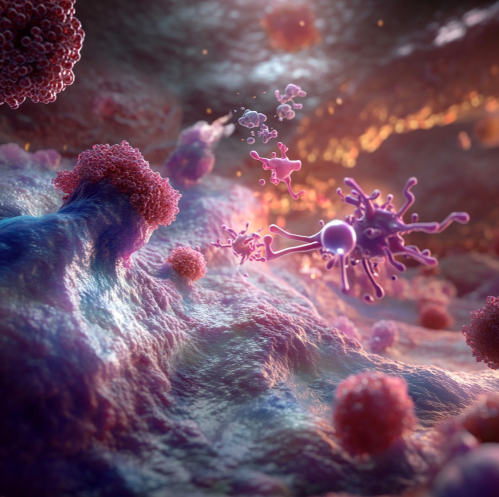
Modulating the Tumor Microenvironment: Overcoming Immunotherapy Resistance
A second, highly strategic wave of BsAbs is succeeding where first-generation checkpoint inhibitors have failed, showing definitive activity in IO-resistant and immunologically “cold” tumor settings.
- Checkpoint Inhibitor + Cytokine Fusions: Innovent Biologics’ IBI363 (PD-1 x IL-2 bias) is a standout, achieving a 36.7% cORR in heavily pretreated, IO-resistant squamous NSCLC. By delivering a T-cell-activating IL-2 signal directly to PD-1-expressing immune cells within the tumor, it can reignite an anti-tumor response.
- Dual Checkpoint Inhibition: The PD-1 and TIGIT pathways are a key focus. Zai Lab’s ZG005 (PD-1xTIGIT) demonstrated a 40.9% cORR as a monotherapy in pretreated, ICI-naive advanced cervical cancer, and an impressive 80% unconfirmed ORR when combined with chemotherapy in the first-line setting.
- Biparatopic Targeting: Chia Tai Tianqing’s TQB2930, which targets two distinct HER2 epitopes, showed a 48.1% ORR in heavily pretreated HER2+ breast cancer, including a 50% ORR in patients who had failed potent ADCs like trastuzumab deruxtecan. This highlights how novel binding mechanisms can overcome entrenched resistance pathways.
The Drivers: A Trifecta of Capital, Capacity, and Innovation
This wave of clinical success would be unsustainable without two other critical enablers: unprecedented capital deployment and a revolutionized manufacturing base.
1. Strategic Capital Deployment: The Billion-Dollar Endorsement
Recent deal-making serves as the ultimate validation. Big Pharma is committing enormous capital to secure leadership positions, with a clear focus on the PD-(L)1 x VEGF axis as a potential backbone therapy for solid tumors.
- Bristol Myers Squibb & BioNTech: The $11.1 billion alliance for BNT327 (PD-L1 x VEGF-A) is a watershed moment. The structure—$1.5B upfront, $2B in non-contingent near-term payments, and a 50:50 cost/profit share—signals a deep, risk-balanced partnership for an asset with foundational potential across more than 10 tumor types.
- Pfizer & 3SBio Inc.: Pfizer’s $1.25 billion upfront payment for ex-China rights to SSGJ-707 (PD-1 x VEGF) demonstrates aggressive positioning. The intent to immediately establish US-based manufacturing and initiate Phase 3 trials underscores the urgency and strategic importance of this class.
These deals highlight the rise of China as a global innovation source, as both BNT327 (originated by Biotheus) and SSGJ-707 were discovered by Chinese biotechs.
2. The Manufacturing Ecosystem: From Bottleneck to Enabler
The sheer complexity of producing bispecifics at scale is no longer an impediment. A mature and sophisticated manufacturing ecosystem has emerged to meet the challenge.
- The Rise of Specialized CDMOs: An entire sub-industry has mobilized. AGC Biologics (leveraging its CHEF1® platform for Novelty Nobility), BioDlink (supporting Junshi Biosciences’ bispecific ADC), WuXi Biologics (offering its “Quick ‘n’ Clean” and “Premium Bispecific” platforms), KBI Biopharma, Northway Biotech, ExcellGene SA, evitria AG, and mAbxience are all scaling specialized capabilities.
- Unprecedented Capacity Expansion: The scale of investment is breathtaking. Regeneron’s ten-year, $3+ billion manufacturing agreement with FUJIFILM Diosynth Biotechnologies will dramatically expand its capacity for its VelociSuite®-derived bispecifics. Roche is building a dedicated $283 million facility in Shanghai solely for its blockbuster BsAb, Vabysmo.
- Technological Innovation: The industry is moving towards automated, modular, and continuous manufacturing. Just – Evotec Biologics’ J.POD facilities offer an end-to-end continuous platform in a smaller footprint, while innovators like Sunflower Therapeutics are developing automated perfusion bioreactor systems to intensify upstream processing.
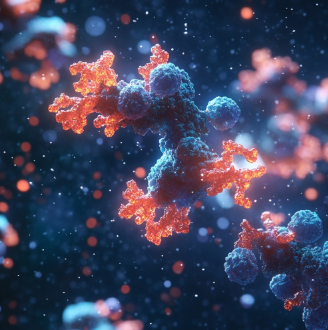
3. Therapeutic Expansion: The New Frontier of Autoimmunity
While oncology commands the headlines, a significant strategic pivot is underway. The Cullinan Therapeutics and Genrix Bio deal for velinotamig (a BCMAxCD3 T-cell engager) is a prime example. The strategy—to use a potent T-cell engager to specifically deplete the pathogenic plasma cells driving autoimmune disease—represents a potential paradigm shift away from broad immunosuppression towards targeted, potentially curative therapies. This opens a vast new market and a new frontier for innovation.
The Ecosystem: A Guide to the Key Players
Success in the bispecific space requires a dynamic ecosystem of innovators, established leaders, and critical enablers.
| Category | Key Players & Strategic Focus |
|---|---|
| Global Pharma Titans | Johnson & Johnson, Amgen, Bristol Myers Squibb, Pfizer, Roche, Regeneron. Focus: Leveraging deep clinical development and commercial expertise to advance late-stage assets. Executing multi-billion dollar deals to secure foundational therapies (e.g., PD-1/VEGF) and expand into new mechanisms (e.g., trispecifics). |
| Platform Innovators | Innovent Biologics, Zai Lab, Genmab. Focus: Advancing internally discovered assets with novel mechanisms (e.g., PD-1/IL-2, PD-1/TIGIT) through mid-to-late stage development. Establishing these platforms as engines for a diversified pipeline. |
| Next-Generation Tech Pioneers | IGM Biosciences (IgM-based platforms), Xilio Therapeutics (tumor-activated engagers), Bright Peak Therapeutics (cytokine fusions), VERAXA Biotech (bispecific ADCs). Focus: Pushing the boundaries of molecular engineering to solve challenges of toxicity, tumor specificity, and novel biology. Often engaged in earlier-stage co-discovery alliances. |
| The Global Innovation Engine (China) | 3SBio Inc., Biotheus, Genrix Bio, Chia Tai Tianqing. Focus: Increasingly a primary source of innovative, clinically de-risked assets for the global market. A testament to the maturation of the region’s R&D capabilities. |
| The Indispensable CDMO Backbone | FUJIFILM Diosynth, AGC Biologics, Lonza, Catalent, WuXi Biologics, KBI Biopharma. Focus: Providing the critical, specialized manufacturing infrastructure and expertise required to produce these complex molecules at scale. Their capacity and technological prowess are direct enablers of the entire field’s growth. |

Strategic Imperatives for a Maturing Market
The convergence of clinical, commercial, and manufacturing momentum has set the stage for a transformative 24-month period. For industry leaders, navigating this landscape requires a focus on several key strategic imperatives.
- Win the Platform Races with Smart Strategy: The competition within key mechanistic classes, particularly PD-(L)1 x VEGF, is now a high-stakes race to market. Success will depend not only on efficacy but on intelligent clinical trial design, biomarker strategy, and combination potential. The BMS/BioNTech deal structure, which allows both parties to combine BNT327 with their proprietary assets, exemplifies this forward-thinking approach. Imperative: Define a clear path to differentiation—be it through best-in-class data, a superior safety profile, or a strategically advantaged combination roadmap.
- Make the “Build vs. Buy” Manufacturing Decision: As molecular complexity increases, manufacturing excellence is a competitive advantage. The strategic choice between building dedicated internal capacity versus leveraging the specialized CDMO ecosystem is paramount. Roche’s decision to build a Vabysmo-specific facility contrasts with Regeneron’s massive CDMO partnership, illustrating two distinct, valid paths. Imperative: Integrate manufacturability assessments into the earliest stages of discovery. Make a deliberate, long-term strategic decision on capacity that aligns with your pipeline’s breadth, financial resources, and risk appetite.
- Invest in the Next Biological Frontier: The future of the field lies in novel biology. While many current BsAbs combine validated targets, the next wave will address entirely new synergistic pathways—modulating different immune cells, targeting the stroma, or developing conditionally active molecules like those pioneered by Xilio Therapeutics that are inert outside the tumor. Imperative: Foster a culture of deep biological research to identify the next generation of target combinations. Balance investment in clinically validated assets with calculated risks on truly novel science to secure future leadership.
The era of the bispecific antibody has reached its industrial prime. The concept is proven; the challenge now lies in execution at the highest level. The organizations that can master the intricate interplay of innovative science, strategic capital allocation, and manufacturing excellence will not only lead this therapeutic class—they will be the ones defining the future of medicine itself.
Hiring in this space? Schedule a call with us to discuss your hiring plans, here. And you can see how we help our clients, here.

